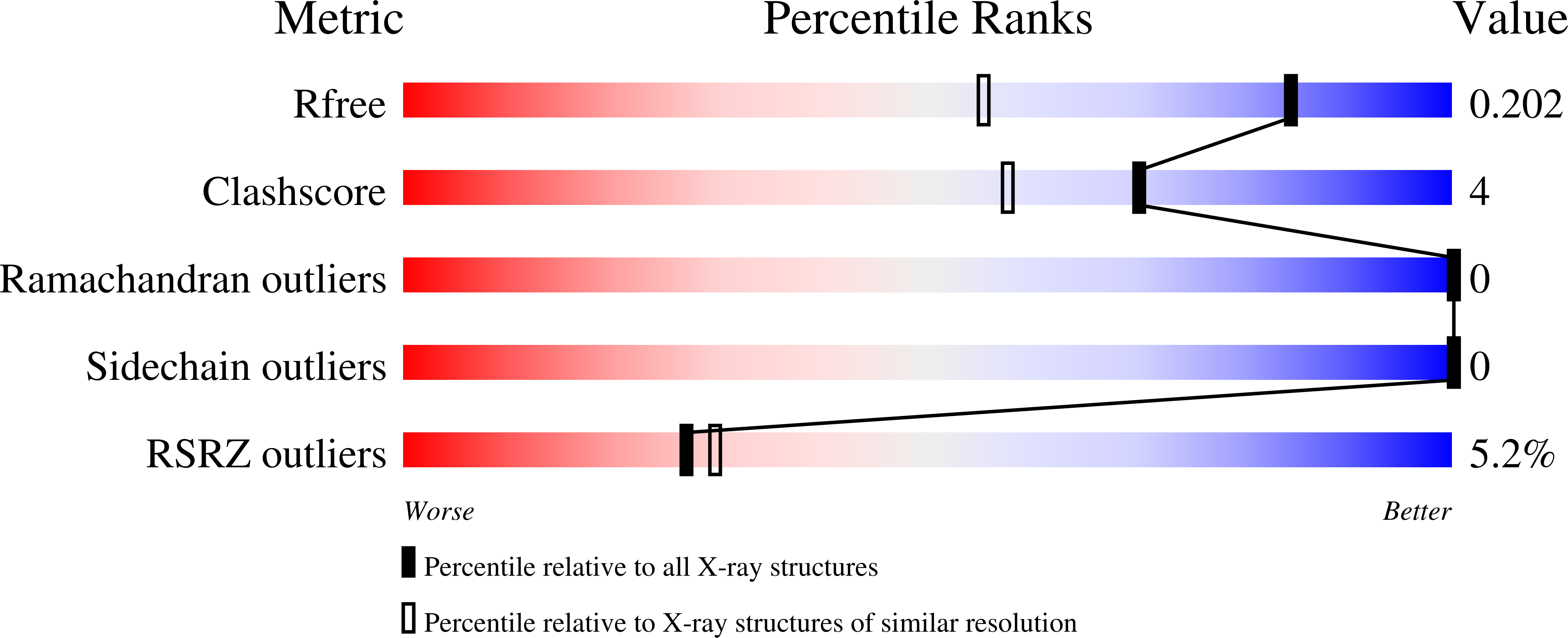The Macro Domain is an Adp-Ribose Binding Module.
Karras, G.I., Kustatscher, G., Buhecha, H.R., Allen, M.D., Pugieux, C., Sait, F., Bycroft, M., Ladurner, A.G.(2005) EMBO J 24: 1911
- PubMed: 15902274
- DOI: https://doi.org/10.1038/sj.emboj.7600664
- Primary Citation of Related Structures:
2BFQ, 2BFR - PubMed Abstract:
The ADP-ribosylation of proteins is an important post-translational modification that occurs in a variety of biological processes, including DNA repair, transcription, chromatin biology and long-term memory formation. Yet no protein modules are known that specifically recognize the ADP-ribose nucleotide. We provide biochemical and structural evidence that macro domains are high-affinity ADP-ribose binding modules. Our structural analysis reveals a conserved ligand binding pocket among the macro domain fold. Consistently, distinct human macro domains retain their ability to bind ADP-ribose. In addition, some macro domain proteins also recognize poly-ADP-ribose as a ligand. Our data suggest an important role for proteins containing macro domains in the biology of ADP-ribose.
Organizational Affiliation:
Gene Expression Programme and Structural & Computational Biology Programme, European Molecular Biology Laboratory, Heidelberg, Germany.
















